The 18th century was a time when European powers became increasingly more visible in the Indian subcontinent. The British East India Company, following the Battle of Plassey in 1757, was no longer a mere trading company but had become a territorial power. This change led to an increase in curiosity about the subcontinent, and it also brought more Europeans to India, who began visiting to satisfy their respective interests. Such was also the case of the English painters Thomas Daniell and his nephew William, who traveled from London to Calcutta in 1786 to gather information about India and profit from the endeavor. Their work was so influential that it shaped the view of Britons about India. During their visit to Delhi, despite being brief, they became the earliest people to produce illustrations of the monuments and sites in Delhi.

BACKGROUND:
Thomas Daniell R.A. was born in 1749 in Surrey, England. Daniell started as a bricklayer in his younger years.. When he was 21, he worked as an assistant to the King’s coach painter, Charles Catton. It was here that he became motivated to pursue a career as an artist, and a few years later, he became a student at the Royal Academy in London. Between the years 1772 and 1784, he exhibited 30 works at the academy. His initial interest in working as a landscape artist was sparked by a commission from a wealthy patron in 1782, who wanted paintings of his country house. Following this, his later submissions to the Academy’s exhibitions were focused on landscape and architecture.

He, however, was unable to find renown as a landscape artist back home. Thus, the idea of finding work and fame as an artist in India was an appealing one, since artists like William Hodges, Thomas Hickey, John Zoffany, and George Willison prospered as painters there and were able to amass a fortune. Thomas Daniell RA obtained permission from the East India Company to go to India to work as an engraver in December 1784. William Daniells R.A. was Thomas Daniells’ nephew. He was orphaned at a very young age and was adopted by his uncle. Thomas also took his nephew along with him to India, who was about fourteen or fifteen at the time.

The Daniells reached Calcutta (present-day Kolkata) in 1786 and stayed in India for seven years (from 1786 to 1793). In India, they dedicated their time to documenting the architecture and landscapes of the country. Their travel prints of India were among the earliest works that captured India in the form of paintings and introduced them to an European audience. The first work Thomas proposed to undertake was a set of twelve views of Calcutta. They completed these by 1788. Their journey through India can be divided into three tours: the first from Calcutta to Srinagar (1788–1791), the second from Madras through Mysore (1792), and the third involving a visit to Bombay and their return to England in 1793. During their stay, they produced a vast collection of notes, sketches, meticulously recording their observations and interests.
ILLUSTRATIONS OF DELHI:
In the autumn of 1788, the duo went on a journey to northern India, from where they moved on to Delhi. They visited Delhi between 16 February and 6 March 1789. Although they stayed for only a little more than a fortnight in Delhi, the duo were among the first few European artists to document the architecture and monuments of the city. The drawings were primarily created by Thomas, while William would help with the preparatory tasks for painting and handled the camera obscura. The Jama Masjid of Delhi is the very first print in their work, the ‘Oriental Scenery’. This painting is also featured in the Lyell collection.

In some of their prints of Delhi, especially of monuments representing imperial power, the Daniells depict the city in ruins. Massive landscapes and monuments are accompanied by hardly any human presence. However, this display of Delhi as an abandoned settlement was not unique to them, since European writers and artists before them also portrayed Delhi in a similar light. This depiction implied that Delhi was neglected and in need of capable rulers, thus needing British intervention. However, this characterisation of Delhi also provided a contrast to life in Britain. The city could be interpreted as a peaceful, agrarian, and calm society, compared to the industrial and tumultuous life in Britain, where the Industrial Revolution was gaining momentum. This pattern could be observed in their depictions of structures like the Purana Qila, Feroz Shah Kotla, and the tomb of Humayun.



The Daniells also drew the Jantar Mantar observatory. This observatory was built by Maharaja Jai Singh II of Jaipur in the 1720s and consists of a collection of astronomical observation instruments. These instruments are designed to measure time, predict eclipses, and track celestial bodies.

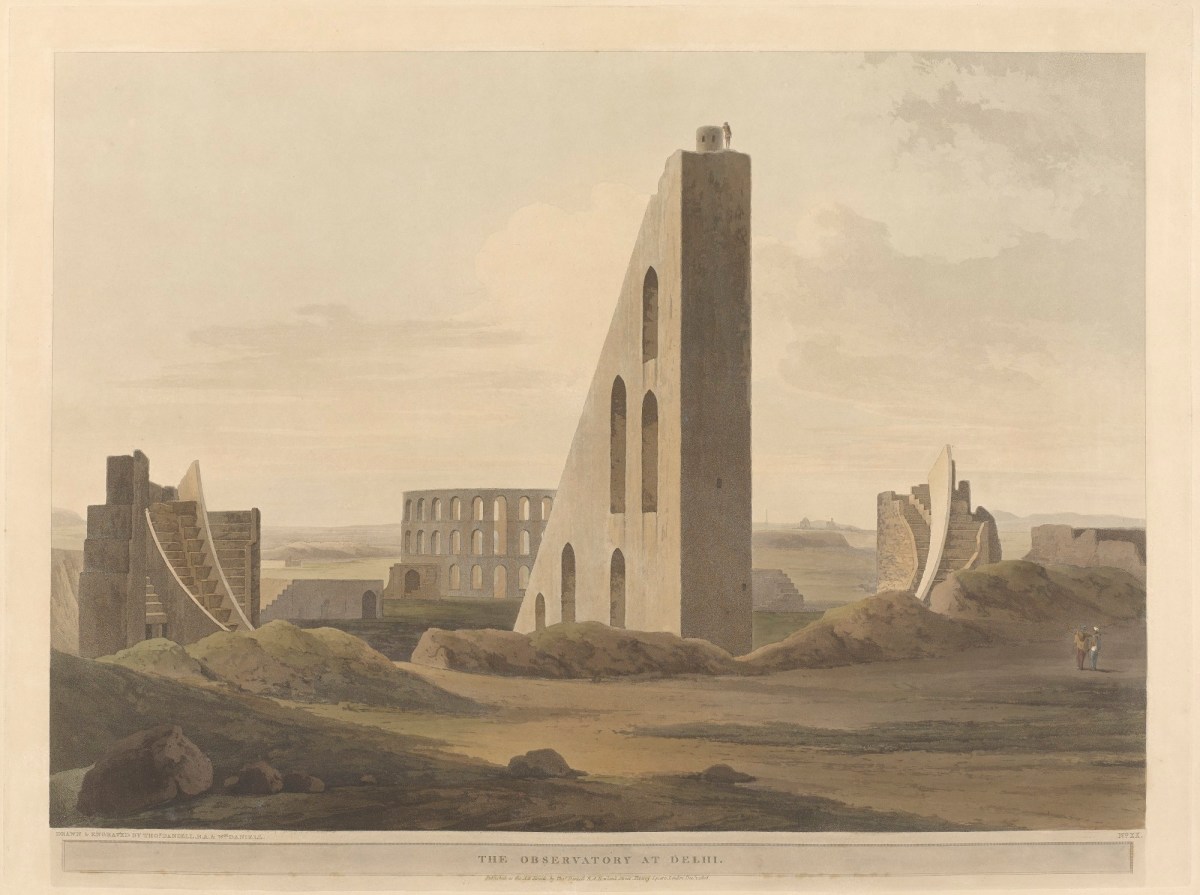
Their print of the Qutub Minar shows the minar, in front of which is the outer wall of the mosque. It also shows the domed gateway, which was built by Alauddin Khalji (r.1296-1316).
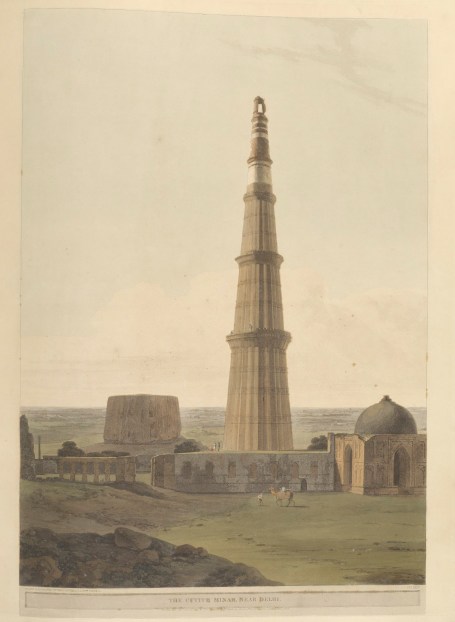
Though the focus of the two artists was not specifically Delhi (but rather all the places they visited in India), the Daniells managed to capture sites from Delhi in a very expressive manner.
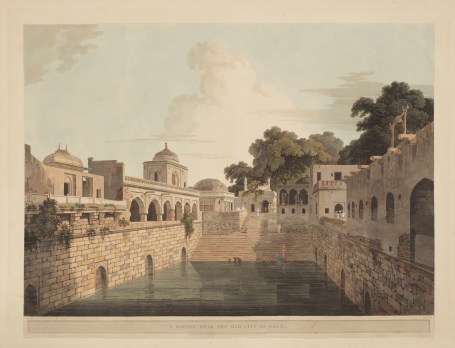
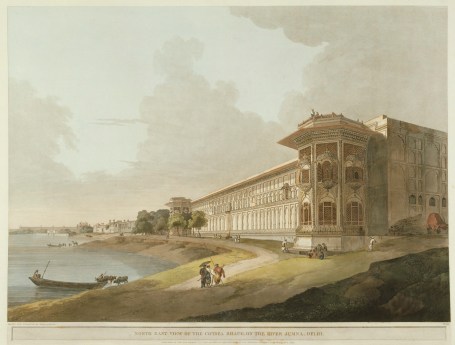
AFTERMATH OF THE VISIT:
By October of the year 1794, the Uncle and Nephew had made their way back to England. Back home, they started preparing the first installment of their series, ‘Oriental Scenery’, which consisted of coloured engravings of sites in India, made by Thomas Daniells. The second installment, completed with the help of William, was finalised in 1797. The third and fourth series appeared in 1801 and 1807, respectively, engraved by both Thomas and William. Some of their sketches also appeared in their work ‘Antiquities of India’, in 1799 and 1804. These six volumes of their work exhibit a consistent style of art. These works proved to be successful, and hence, the Daniells busied themselves with the task of supervising the production of the smaller and uncoloured version of these works between 1812 and 1816.
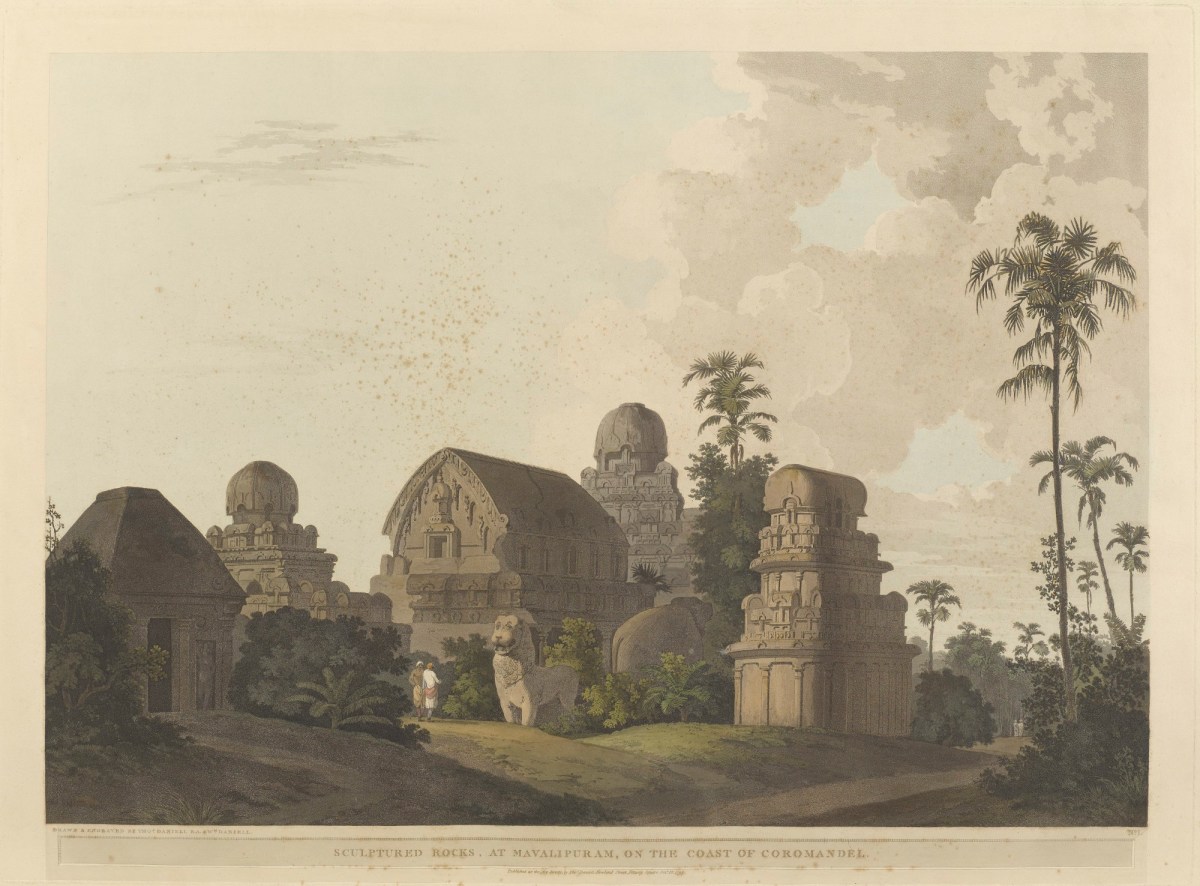
Both Thomas and William accomplished the major achievement of being elected as members of the Royal Academy of Arts (RA), London, in 1799 and 1822, respectively. Their other works include Views in Egypt (1808–9) and Picturesque Voyage to India, by Way of China (1810). William Daniell also produced illustrations of the natural world. One of his most famous works, ‘Voyage round Great Britain’, was published in four volumes between 1814 and 1825. William Daniell passed away in 1837, followed by his uncle in March 1840.
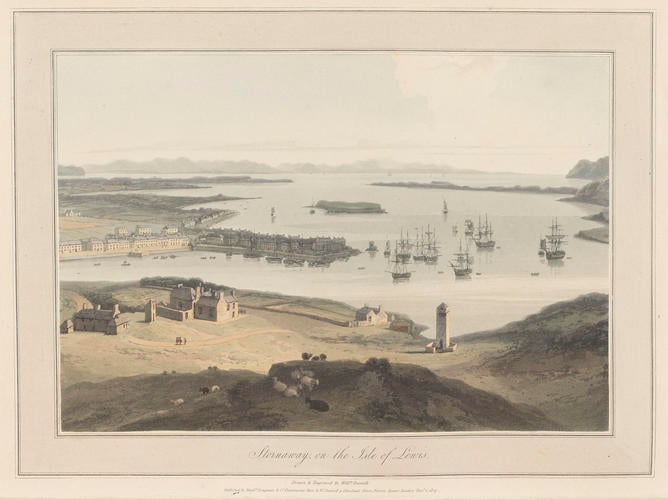
The Oriental Scenery is an important work in that it shaped the perspective and expectation of India of several people in Britain, even years after these works were published. It helped develop a vision of India as a quaint and romantic place. They influenced the view of several others, including Emma Roberts, who was an English writer and traveller known for her memoirs about India, as well as several other artists. The fascination they incited with Indian ruins might have also facilitated the creation of the Archaeological Survey of India (ASI) in 1861.
CONCLUSION:
Thomas and William Daniells came to India in search of an opportunity to grow as artists. Through their travels, they were able to create illustrations of various sites in India. Though their focus was not specifically on Delhi, the Uncle and Nephew duo managed to capture the city in a very pleasing way. Produced in the early stages of colonial development in India, their ideas and depictions of Delhi, as well as other places in India, created a very specific idea of India in the minds of the English population. They were among the first artists to capture the monuments in Delhi, and their picturesque depictions led not only to their own successes as artists but also fostered a sense of fascination with Indian ruins within the European population.
REFERENCES:
- https://dagworld.com/thomasdaniell.html
-
Foster, William. “BRITISH ARTISTS IN INDIA 1760–1820.” The Volume of the Walpole Society 19 (1930): 1–88. http://www.jstor.org/stable/41830333.
- https://www.sahapedia.org/unlikely-voyage-india-inspired-over-100-paintings
- https://www.royalacademy.org.uk/art-artists/name/william-daniell-ra-1
- https://zikredilli.com/f/delhi-in-travel-prints-of-the-daniells#:~:text=The%20initial%20picturesque%20locations%20and,visualised%20India%20and%20the%20East.
- https://cafedissensus.wordpress.com/2018/06/15/the-exotic-tropic-of-william-and-thomas-daniell/
- https://artsandculture.google.com/story/magnificent-heritage-of-india-as-seen-by-the-daniells-victoria-memorial-hall/swWxpeHNigcAIQ?hl=en
- https://www.royalacademy.org.uk/art-artists/name/thomas-daniell-ra-1
- https://scroll.in/article/1035118/the-art-of-conquest-images-of-india-on-the-verge-of-british-rule-as-seen-by-two-travellers
- https://www.clayton-payne.com/artworks/9406
- https://www.christies.com/en/lot/lot-4572571
- https://www.christies.com/en/lot/lot-1034617




